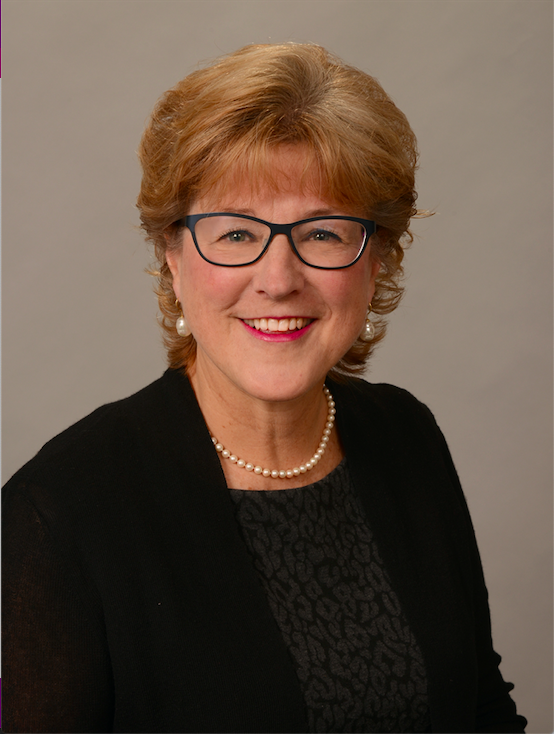Article
Dr Linda D. Bradley Highlights Disparities in Diagnosis, Treatment for Endometriosis
Author(s):
Women of color have a longer journey to diagnosis for endometriosis and uterine fibroids, have fewer resources to access care, and receive different treatments than White women, said Linda D. Bradley, MD, of Cleveland Clinic.
The patient journey to get a diagnosis for endometriosis and uterine fibroids can be long and frustrating for all women, but even more so for women of color, explained Linda D. Bradley, MD, professor of Obstetrics and Gynecology and Reproductive Medicine, Cleveland Clinic.
Patients of color often have less self-advocacy when receiving care, fewer resources to access care, and receive different treatments than White woman might, she explained.
In part 1 of an interview with The American Journal of Managed Care® (AJMC®), Bradley discussed the impact of systemic racism on diagnosis and treatment, social determinants of health that impact these health inequities, and how to encourage women of color to participate in more clinical trials.
AJMC®: Can you describe what the patient journey to diagnosis is like in endometriosis?
Bradley: The journey to the diagnosis in endometriosis for many women, unfortunately, is very circuitous. Many women may begin with symptoms early. and—depending on the studies that anyone reads—patients may see 2 to 4 physicians before diagnosis, suffer needlessly with poor quality of life, and see multiple health care providers before a diagnosis is even thought about.
So, circuitous, long, frustrating, and, finally, liberating for many patients when they do get a diagnosis.
AJMC®: How does disease presentation of uterine fibroids differ among Black and White women? Do we see any differences in terms of age of onset, severity of disease, things like that?
Bradley: I think that for fibroids, again, those numbers are also long, and maybe even up to 7 years with lack of treatment. Women with fibroids may have pain and those with endometriosis may have pain. For fibroids, more often, the pain could be just with activities—pain during the menstrual cycle, pain with intercourse, and pain with certain movements. Fibroids tend to cause bleeding—heavier bleeding, longer periods, erratic periods, clotting with resulting anemia—whereas endometriosis, less likely, is associated with heavy menstrual bleeding.
But these disease states can coexist together. A patient could have fibroids and can also have endometriosis. There are more women who have fibroids depending on age and race. For Caucasian women, 60% to 70% are at risk of just having fibroids, and women of the African diaspora have a risk of up to 70%. Whereas the risk of endometriosis may be lower, about 10% to 15%. Sadly, the disparities in health care for women of color often lead to this circuitous pathway for diagnosis. For many women of color, instead of the primary thought being that endometriosis is the culprit for the pain, many of those patients that are Black and Brown are thought to have a sexually transmitted infection. Previous history, for instance, have been labeled as having pelvic inflammatory disease, gonorrhea, chlamydia, rather than a disease state like endometriosis.
Pain in Black and Brown women is often dismissed, undertreated, and the etiology of the pain undiscovered. As clinicians and providers, we can't be dismissive and think that all pain is in the patient's head, nor is all pain due to endometriosis or fibroids. But it's very incumbent upon physicians and health care providers to exclude—to their best of their ability—women with these disease states, so they're not suffering for years.
AJMC®: How does systemic racism impact diagnosis and treatment of endometriosis?
Bradley: I think it's like most of medicine: the social determinants of life—where you live, work, play, enjoy yourself—it will be very different, so your zip code sometimes makes more difference than your genetic code. Poverty. Less access to care—that's a big issue—the ability to have a primary care physician or a primary gynecologist or a primary nurse practitioner is more difficult. What's popular now are virtual visits, because of COVID-19. It's really a great opportunity for patients to link with their physicians. But poverty sometimes means lack of phones that utilize video or being an essential worker and not being able to take a 30-minute video conference call with your health care provider.
Many of my patients who are underresourced when they do have video visits or follow-ups with me, they're either outside, they're on their phone, they're in a noisy area. Resourced patients are sitting in front of a beautiful fireplace, in a beautiful home that's well organized. I think the ability to connect with patients is more difficult. And I believe that, while virtual visits and having access to computers is wonderful, I think our patients should also benefit from having telemedicine—telephone medicine. And I think that would increase access. But, in some situations, the payment for a video visit to the provider is greater than a telephone visit, now that the COVID-19 pandemic is sort of over.
There are a lot of subtleties and politics of how people access care. But if I were to just summarize this, I think the disparities come with also lack of insurance. You could have insurance, but certain providers don't take that insurance. There are long wait times, difficulty to get tests ordered, difficult to get follow-up care, and again, just access to certain medications. New therapeutics that are available are sometimes not on formulary. It's a conundrum for our patients. But those are the things that I see and may contribute to the racial disparities in health care.
AJMC®: Any other social determinants of health factors that impact these health inequities in diagnosis and treatment of endometriosis or uterine fibroids that come to mind?
Bradley: I do think obesity has an impact. A person being overweight, over the ideal body weight, obese—having morbid obesity, as we call this now. Patients with obesity across the spectrum get potentially less adequate health care. According to the CDC, nearly 80% of women from the African diaspora have weight that is over the ideal body weight.1 There is fat shaming—patients are embarrassed to see a physician and get undressed. They feel that they may be looked at differently when they come to the doctor's office. I'm just saying what I read and what I see, and some of the reasons I get when I ask patients why they have not come in or come back. It's been verified by the literature that weight may affect the kind of health care that's given, as well as poverty, type of insurance, and those kinds of things. I would put all of that in the bucket for why there may be issues.
The other thing is I think people of color have less self-advocacy for conditions. They are less likely to speak up and to ask questions. I don't want to use the word “demand,” but they may be less likely to ask for an ultrasound or other imaging that might be available for a diagnosis. I think there are so many factors that affect getting health care. They might not have the means to pay a co-pay: it could be $5 or it could be $25. They need to be able to get off of work. There are just so many things that, if we were just putting bullet points, you could just list the litany.
Then there are times where patients feel that they've just have told their doctor, informed their doctor or nurse, but they're not listened to. Those are things that I think about and that I've seen in my career as reasons for differences in health care, and then subsequent health care outcomes. We know, for instance, that women from the African diaspora, in particular, for fibroids, present with the disease earlier with larger and more numerous fibroids compared with Caucasian women. Then, the ability for women of color to get the newer, more minimally invasive surgeries, such as laparoscopic treatments and robotic therapy, such as having access at a health care system to a physician that is fellowship trained in minimally invasive gynecology, we call it MIGS, may be different.
We know, sadly, that women of color more often have their ovary or ovaries removed, leading to menopause or infertility issues, than White women. The ovary is one of the most frequent sites where endometriosis can occur. I'm in a residency/fellowship program and we are high-tech and high-touch, but we recommend draining of the ovary—it's really not drained—but, basically, salvaging the ovary, especially the area where the eggs are, so that women can subsequently have children. White women get that opportunity. There are studies to validate that Black women are more likely to get the ovary taken out.
For fibroids, they have bigger fibroids, which require more complex surgery, and maybe these patients have obesity and other comorbidities. Black women are more likely to have hysterectomies than uterine-preserving procedures, like myomectomy. We just see this in gynecology, we see it in organ transplants, we see it in breast disease management. Every disease state, it's always worse for Black women and Brown women.
AJMC®: How can Black women and other women of color be encouraged to participate in clinical trials and other research initiatives for endometriosis and uterine fibroids?
Bradley: I think all women should be asked, and that the language that's given about clinical trials be reviewed with patients. I think there's a big stigma—we all know about the Tuskegee experiment that went on for decades. What I tell my patients is that what we do now, whether it's COVID-19 therapies where we wanted to enroll patients in clinical trials or therapies for fibroids or endometriosis, the difference for the Tuskegee Syphilis Study, is that there was a treatment for syphilis. It was penicillin. Sadly, the therapy was withheld from these men, and they were followed for decades to see these poor outcomes, up to death and blindness and neurologic disease and the like.
What we're looking now for fibroids and endometriosis are treatments that we know work and are safe. The 2 newest ones, since 2020/2021, are the gonadotropin-releasing hormone (GnRH) antagonists, and it's wonderful that in these clinical trials, and why I like using some of these drugs, depending on the patient profile, is that between 60% and 68% of the women were women of color. They were women that were overweight. They included women who I see in my practice with huge fibroids. I've been a part of trials—it's good to have language that patients understand, and also, having people that look like the patients you want to enroll. Do you have research nurses in your hospital to be a part of encouraging patients? Do you have doctors of color that can help recruit, and be involved with the clinical trial?
You also have to look at how difficult is the trial in terms of: how frequently do they have to come back for blood work, imaging, filling out questionnaires? I've been in a couple of trials, and it's a lot of work for patients. One of the trials for the GnRH antagonists required that women collect all their pads, tampons, and sanitary products, and get these things mailed back. Of course, the mailing is free. But can they carry a purse or a satchel that's given to put all these sanitary products in so they can be mailed? The researchers look at blood loss. Do they have the facility to fill out a daily questionnaire or a weekly questionnaire about quality-of-life metrics that are calculated on a frequent basis, so that when the trial is unblinded, you've got excellent data points of a before and after.
It takes a lot to be a part of a clinical trial. If you're working, it's tough. There’s a trial at my hospital right now that I would like to be a part of, but I'm a surgeon, and what they need from me, it may be something I just can't do, because of how frequently I would need to come, it has to be timely for certain lab tests. It's not as easy as it looks, and flexibility in one’s schedule allows people to participate. You have to be empathic, be patient-centric in terms of the language, have time and not be rushed, make people feel like people and not a number or a guinea pig. Those are things that I think will help women to embrace trials and want to be a part of it.
Reference
1. Centers for Disease Control and Prevention. Health of Black or African American non-Hispanic population: Table 26. https://www.cdc.gov/nchs/fastats/black-health.htm. Accessed February 15, 2023.


